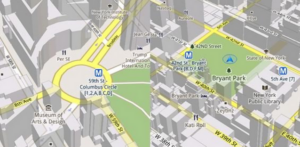GPS has been a crucial technology for decades, but it does have its limitations, particularly in urban areas where signals can get noisy. Now, engineers in the Netherlands have developed “SuperGPS” – a hybrid positioning system that combines wireless and optical connections to pinpoint locations within centimeters.
GPS satellites each carry an atomic clock that keeps extremely precise time, which is synchronized with clocks on the ground and on other satellites. A receiver device communicates with several satellites at once and calculates its own position in 3D space based on theirs, with a precision that can potentially be as small as a few centimeters.
Who loves beer the most around the globe? (infographic)
But that’s under ideal conditions, and of course that’s not how the real world usually works. Buildings and other obstructions between the receiver and the satellites can disrupt the signals and widen the window of error to several meters. As location data becomes more critical for future technology like autonomous vehicles, finding ways to improve precision is increasingly important.
Read more: New Atlas
Ask me anything
Explore related questions





